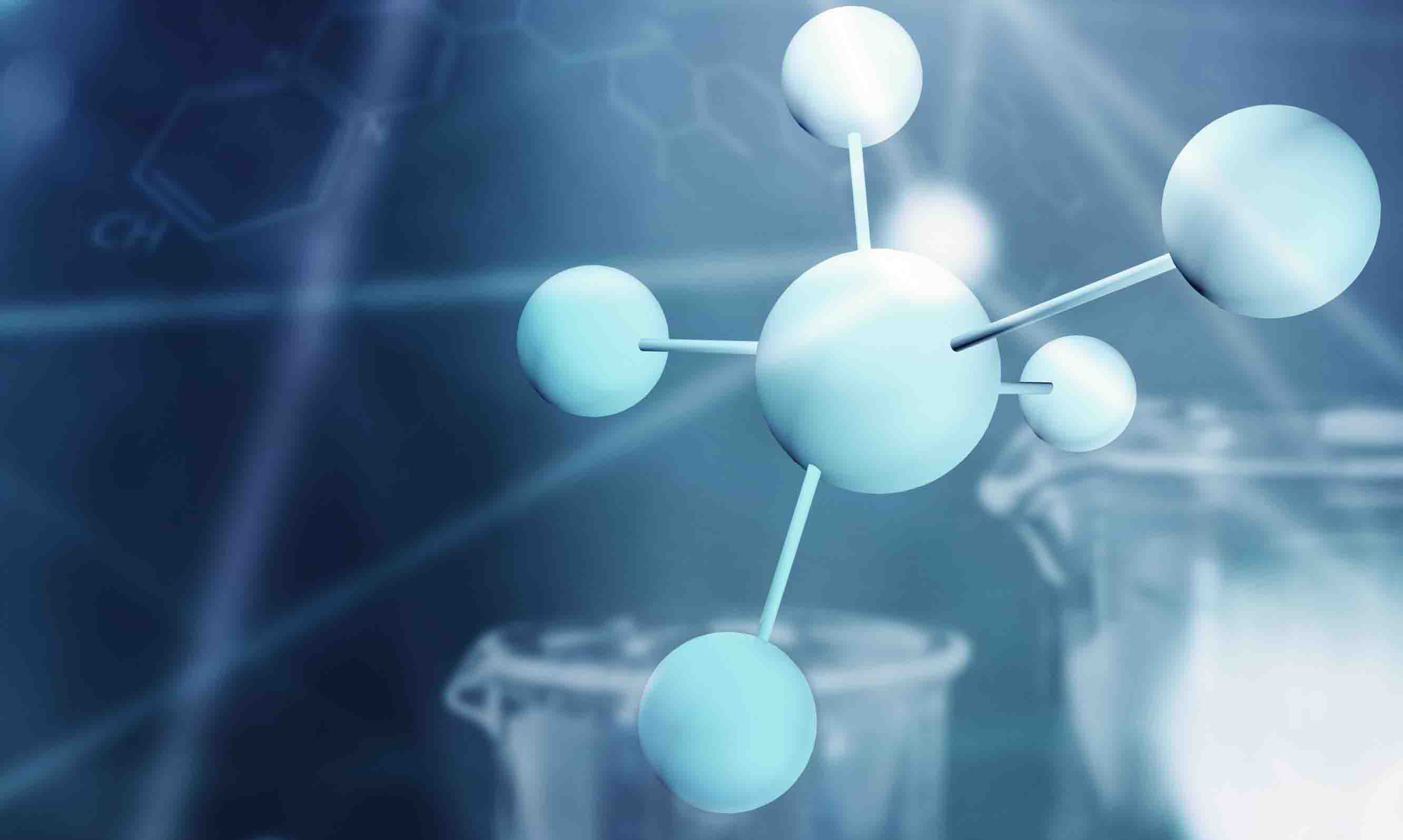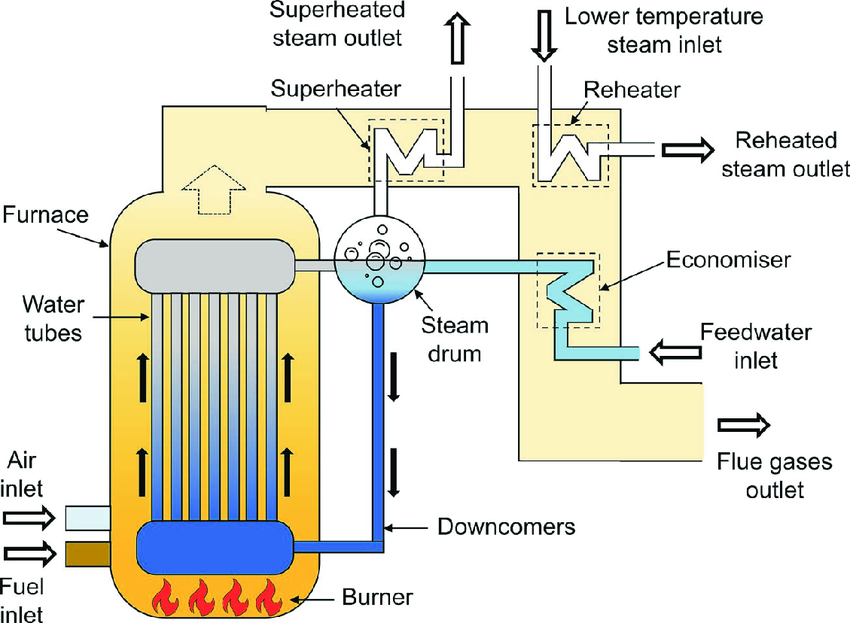Steam is a highly effective heat transfer medium due to its unique properties, particularly its ability to release large amounts of energy through condensation. When used in heat transfer applications, steam offers rapid, even heating and precise temperature control through pressure adjustment.
Steam Generation
Steam is generated by heating water to its boiling point, typically in a boiler. The process involves:
- Heating water: A heat source (e.g., burning coal, natural gas, or nuclear reactions) is applied to water in a boiler.
- Vaporization: As the water reaches its boiling point, it transforms from liquid to gas, expanding in volume by about 1,700 times.
- Pressure control: The steam's pressure and temperature are regulated within the boiler system.
- Superheating: In some cases, steam is further heated beyond its saturation point to create superheated steam, which contains more energy.
- Distribution: The generated steam is then directed through pipes to its intended use, such as powering turbines for electricity generation or providing heat for industrial processes.
The efficiency and characteristics of the steam produced depend on factors like the heat source, boiler design, and intended application.
Types of Steam
Steam exists in several forms, each with distinct properties:
- Wet Steam (Saturated Steam):
- Contains water droplets suspended in vapor.
- It forms when water begins to evaporate but hasn't fully converted to vapor.
- Wet steam has less usable heat energy than dry saturated steam, with its energy content determined by its dryness fraction.
- It can cause corrosion and decrease heat transfer efficiency.
- Dry Saturated Steam:
- Steam at the saturation temperature with no water droplets.
- It occurs when all water has evaporated but the temperature hasn't increased beyond the boiling point for the given pressure.
- Rapid and even heating, high heat transfer coefficient, precise temperature control through pressure adjustment.
- Used for general heating, process heating.
- Superheated Steam:
- Steam heated beyond its saturation temperature.
- It contains more energy than saturated steam and behaves more like a gas, obeying gas laws.
- Resistant to condensation, higher temperatures, lower density.
- Used in power generation, turbine operation
Pressure Classifications and Ranges
The following pressure classes are obtained from multiple sources but can vary between industries and specific facilities. When selecting steam pressure for process applications, it is recommended to find the equivalent steam pressure for the required temperature in steam tables, then add approximately 45 psi to ensure adequate heat transfer.
Low Pressure (LP) Steam
- Type: Typically saturated steam
- Pressure Range: Less than 0-15 psig (0-1.03 barg)
- Temperature Range: 212-250°F (100-121°C)
- Applications: Water heating, unit heaters, space heating, comfort heating
- Note: Always recommended for general heating applications
Medium Pressure (MP) Steam
- Type: Typically saturated steam
- Pressure Range: 15-150 psig (1.03-10 barg)
- Temperature Range: 250°F-366°F (121°C-186°C)
- Applications: Process heating, sterilization
High Pressure (HP) Steam
- Type: Can be saturated or superheated
- Pressure Range: 150-600 psig (10-40 barg)
- Temperature Range: 366°F-482°F (186°C-250°C)
- Applications: Process applications requiring higher temperatures
Very High Pressure (VHP) Steam
- Type: Typically superheated
- Pressure Range: Over 600 psig (>40 barg)
- Temperature Range: Over 482°F (>250°C)
- Applications: Specialized industrial processes requiring extreme temperatures
Energy Content Calculation
The energy content of steam is calculated differently depending on its state:
For Wet Steam
Energy content depends on the dryness fraction (ζ):
Where:
- ht = enthalpy of wet steam (kJ/kg)
- hs = enthalpy of dry saturated steam (kJ/kg)
- hw = enthalpy of saturated water (kJ/kg)
- ζ = dryness fraction
For Dry Saturated Steam
Where:
- hg = Total enthalpy (kJ/kg)
- hf = Sensible heat (kJ/kg), the energy required to raise water from reference temperature (0°C) to boiling point.
- hfg = Latent heat (kJ/kg), the energy required to convert saturated water to saturated steam.
At atmospheric pressure:
- Sensible heat (hf) = 419 kJ/kg
- Latent heat (hfg) = 2257 kJ/kg
- Total enthalpy (hg) = 2676 kJ/kg
For Superheated Steam
Where:
- hs = enthalpy of superheated steam (kJ/kg)
- hg = enthalpy of dry saturated steam (kJ/kg)
- Cps = specific heat of steam at constant pressure (≈1.860 kJ/kg°C)
- Ts = superheated steam temperature (°C)
- Tf = saturation temperature (°C)
The enthalpy values for superheated steam at various pressures and temperatures can be found in steam tables, such as:
- At 15 bar, 300°C: 3039 kJ/kg
- At 20 bar, 300°C: 3025 kJ/kg
- At 30 bar, 300°C: 2995 kJ/kg
Advantages as Heat Transfer Medium
Steam offers several advantages over other heat transfer fluids:
- High Energy Density: Steam releases 5-10 times more energy per unit mass than hot water through latent heat transfer.
- Constant Temperature: Condensation occurs at constant temperature, enabling even heating across the entire heat transfer surface.
- Precise Control: Temperature can be precisely controlled by adjusting pressure.
- High Heat Transfer Coefficient: 6000-15000 W/(m²°C) compared to 1000-6000 W/(m²°C) for hot water.
These properties make steam particularly valuable in applications requiring rapid, uniform heating such as power generation, industrial processes, sterilization, and district heating systems.
References
Perplexity A.I. assisted description generation, 31st Mar 2025.
 Kokel, Nicolas
Kokel, Nicolas 









